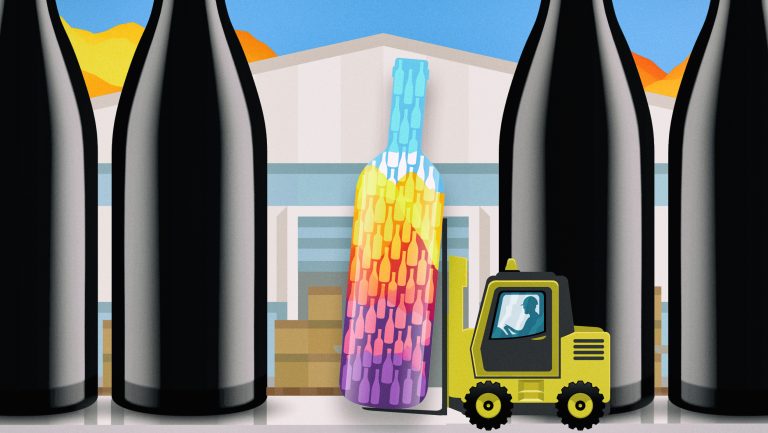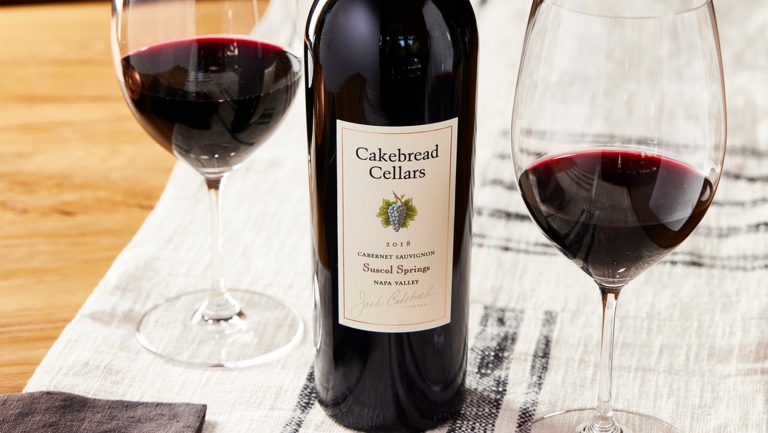The wine industry, like the a vineyard itself, is a deceptively delicate ecosystem. A shift in one area can threaten the whole. A streak of terrible weather in one region trickles down, leading to slashed revenues and lost jobs. Same goes for the industry: If one sector changes dramatically, others are materially affected.
The overall number of wineries in the United States has grown greatly in recent years, while the landscape of distributors has contracted. Perhaps counterintuitively, this trend has led to a wave of mergers and acquisitions among large and small distributors alike. “It comes down to logistics,” says Dr. Liz Thach, MW, a professor of wine and management at Sonoma State University. “Distributors of all sizes are being forced to consolidate for several reasons, including the phenomenal growth of the industry overall and the widespread consolidation of [larger] wineries.”
A Changing Landscape
A glance at the numbers puts the industry’s challenges in stark relief. The number of U.S. wineries has risen sharply recently, from around 1,800 in 1995 to 9,645 as of December 2017, according to Wines Vines Analytics. Distributor counts, however, have gone in the opposite direction, shrinking from around 3,000 distributors in 1995 to around 1,150 or so today.

Don’t miss the latest drinks industry news and insights. Sign up for our award-winning newsletters and get insider intel, resources, and trends delivered to your inbox every week.
The math has changed dramatically in a relatively short time, and there are no signs that winery growth or distributor consolidation is slowing down. While much media attention has been focused on the larger mergers, there appears to be as much frenzied M&A activity among smaller distributors.
Richard J. Genova, the president and CEO of Vintners Alliance, notes that many small-scale distributors are banding together to create synergies that enable them to compete better. “If one merger entity is a specialist in Italian wines,” he says, “and another is a specialist in French wines, together the portfolio is a richer offering to their combined client base. Additional potential synergy comes with the combined size of the sales staff of both companies, giving them greater market reach.”
But according to Rob McMillan of Silicon Valley Bank, based in Santa Clara, California, all these changes may spell trouble ahead for the industry. “Some people would say that’s a negative way to look at it,” he says, “because business is good, and 2018 will be a good year. But what’s on the horizon?” McMillan believes that consolidation among distributors for the past 18 months is hurting sales. “The problem we’re facing is a declining growth rate,” he says. “That doesn’t mean sales are lower. It means the growth rates we’ve been used to are dropping.”
Over the past few decades, wine sales have grown significantly in the U.S., to a total retail value of $59.5 billion in 2016, up from $12.2 billion in 1995, according to the Wine Institute. McMillan predicts a 4 percent to 8 percent growth rate for this year—which is at least 2 percent lower than it has been lately.
A reckoning appears to be taking place on all levels—at distributors and wineries.
While boutique wineries are launching all the time, larger domestic wineries are consolidating. In 2016 alone, Jackson Family Wines snapped up Penner-Ash Wine Cellars and Copain; GI Partners gobbled up a majority share in Far Niente Wine Estates, Nickel & Nickel, Bella Union, EnRoute, and Dolce; and E. & J. Gallo bought Orin Swift Cellars—among others notable acquisitions.
“If a distributor suddenly has 1 million more cases to hold and move,” Thach says, “that creates a host of issues just in terms of warehousing space and transportation.” Instead of taking the costly and time-consuming step of building out their infrastructure capabilities, companies expand their capabilities by merging with distributors. The reverse scenario also holds true: If a distributor needs access to more inventory to compete more effectively in a certain market, merging with another company is the fastest way to achieve that goal.
Headlines about consolidation among the larger distributors have dominated the wine trade for years. Currently, four distributors control about 60 percent of the market: Southern Glazer’s, with $16 billion (29 percent); Breakthru Beverage Group, with $7.2 billion (14 percent); Republic National Distributing Company (RNDC), with $5.8 billion (11 percent); and Young’s Market Co., with $3 billion (6 percent).
The Big Four are themselves the result of mergers, most notably the 2016 merger of Southern Wine & Spirits and Glazer’s, which formed Southern Glazer’s Wine & Spirits. Southern Glazer’s distributes more than 150 million cases of wine and spirits annually, employs more than 20,000 people, and has operations in 41 states and the District of Columbia, as well as in the Caribbean and Canada.
But small and midsized distributors have been consolidating as well. “Some of this is a result of these entities trying to compete with larger distributors,” says Mat Garretson, the founder of the Minnesota distributor Négoce, “either on a national or regional scale. In certain instances, the mergers are an attempt [on the part of the smaller distributors] to become a more desirable acquisition target for even larger wholesalers.”
McMillan notes that the rate of consolidation has also transformed the premium wine market. Many small-scale, premium wines don’t produce at a scale-level attractive to the larger distributors, and may be offloaded from those portfolios, creating an opportunity for smaller distributors to snap them up. “Many of these large distributors are no longer hand-selecting wines,” he says. “They’re distributing mainly mass-produced wines, and it’s almost impossible to make premium wine on a mass scale.”
Stronger Together
The opportunity to capitalize on premium wines has not been lost on smaller and medium-sized distributors seeking to gain a foothold in the market. That was the case for Serendipity Wines, based in Austin, Texas. In 2017, Serendipity’s CEO, Troy Kuhn, approached New Vintage, in San Antonio, with the idea of merging the two companies to compete more effectively in the Texas market. At the time, Serendipity was doing about $22 million in sales annually, while New Vintage’s sales were around $4 million. Says Kuhn, “We were motivated to merge because we wanted to get better scale in Texas, which is challenging because it’s so sprawling.”
It’s also a state where mammoth distributors dominate the market. Southern Glazer’s and RNDC lead the sales landscape, followed by midsized distributors like Pioneer Wine Company and Favorite Brands.
By merging with New Vintage, Serendipity finds itself competing more effectively with Pioneer and Favorite, by warehousing and shipping from locations in Dallas, Houston, and Austin. Serendipity also inherited a powerful team of salespeople, which helped it land key customers it had previously been unable to access. Says Kuhn, “The motivation to get inroads at premium accounts that we value was also a big part of the equation.”
Serendipity now employs 50 salespeople selling 2,500 SKUs. In 2017, the company shipped 170,000 12-pack cases, up from 130,000 cases the year before. In 2018, it forecast shipments of around 200,000 cases, with an increase in sales to roughly $30 million. “Because I believe we are more responsive than our fellow midsized distributors,” says Kuhn, “in five years I think that instead of being the number three midsized distributor, we’ll be number one in terms of revenue and reputation. That’s the goal.”
Supercharging growth was also the goal of Matt Guerriero, a co-owner of VinMarket Selections, headquartered in Denver. VinMarket opened in 2013 but found that organic year-over-year growth wasn’t going to deliver the scale necessary for it to thrive in the competitive Colorado marketplace.
In 2015, VinMarket merged with Terranova Wines, and later with Elysium Fine Wines, in an effort to grow quickly and consolidate resources to gain market share. The newly combined company, called VinMarket, ballooned to nearly 900 SKUs. After shaving off redundancies and choosing the best products in each category from the three combined companies, VinMarket’s portfolio now sits at 560 SKUs. “As difficult as the transition was, it ultimately simplified our business,” Guerriero says. “We went down to one office from three, we became more relevant to a broader group of accounts, and we could manage importing and transportation costs better. Our business exploded and we’ve nearly doubled [in sales] since the merger. Never in our wildest dreams could we have achieved that kind of growth organically.”
VinMarket invested its newfound revenue in inventory to support the dramatic sales increases, as well as in additional office support and employee benefits. Guerriero and his and co-owner, Charles Bloomfield, chose not to increase their own postmerger compensation packages. “It would have drained the same financial resources that were necessary to grow, and it’s a shortsighted reason to bring companies together,” Guerriero says. “A good merger is about creating efficiencies that drive costs down while improving the service to your customers, suppliers, and employees.”
VinMarket and Serendipity are hardly alone. Among other recent deals, Domaine Select Wine & Spirits acquired Il Castagno and Unity Selections to form Local Merchants of Colorado, and Baroness Wines and Volio Vino of Colorado also merged.
Valerie Gerard-Matsuura, the trade relations director at Sopexa USA, points out that as more companies merge, others will need to band together to compete. “The U.S. distribution market is so competitive,” she says, “that it seems natural for small distributors to consider merging.”
Looking Forward
Healthy smaller-scale distributors with complementary portfolios may stimulate stronger growth by teaming up: It’s hard to argue against less overhead and a more robust and connected sales team. But where does that leave the wineries?
Thach argues that as even smaller distributors begin to merge, small wineries without a reputation will struggle to land distributors and therefore placement in key restaurants and stores. She predicts that many will turn to e-commerce as a way to boost their in-person, direct-to-consumer sales. (Or they may attempt to simply self-distribute, in the states where that’s legal.) “The new distribution model is already showing signs of capitalizing on e-commerce,” she says. “About 4 percent of wine in the U.S. is sold online, as opposed to about 20 percent of the wine sold in China. It’s an area primed for robust growth.”
McMillan notes that the online market requires less overhead, and it opens the door to consumers in more locations. “[Online sales] will be the fastest-growing channel for the wine market, for sure,” McMillan says. “The industry has to make the mental switch from saying ‘This is impossible’ to ‘This is inevitable.’” Data backs that assertion. Direct-to-consumer sales represented 49 percent of wineries’ revenue in 2012, and 61 percent in 2017.
As the wine sales ecosystem continues to evolve, certain wineries and distributors are adapting better than others. Some may watch sales stagnate, while others pursue new deals to help them better compete in the rapidly changing marketplace.

Dispatch
Sign up for our award-winning newsletter
Don’t miss the latest drinks industry news and insights—delivered to your inbox every week.
Kathleen Willcox is a journalist who writes about food, wine, beer, and popular culture; her work has appeared in VinePair, Edible Capital District, Bust magazine, and Gastronomica, and on United Stations Radio Networks, among other venues. She recently coauthored, with Tessa Edick, “Hudson Valley Wine: A History of Taste & Terroir.” She lives in Saratoga Springs, New York.






